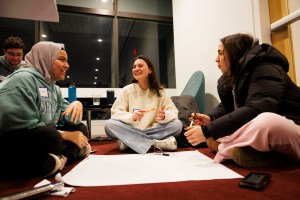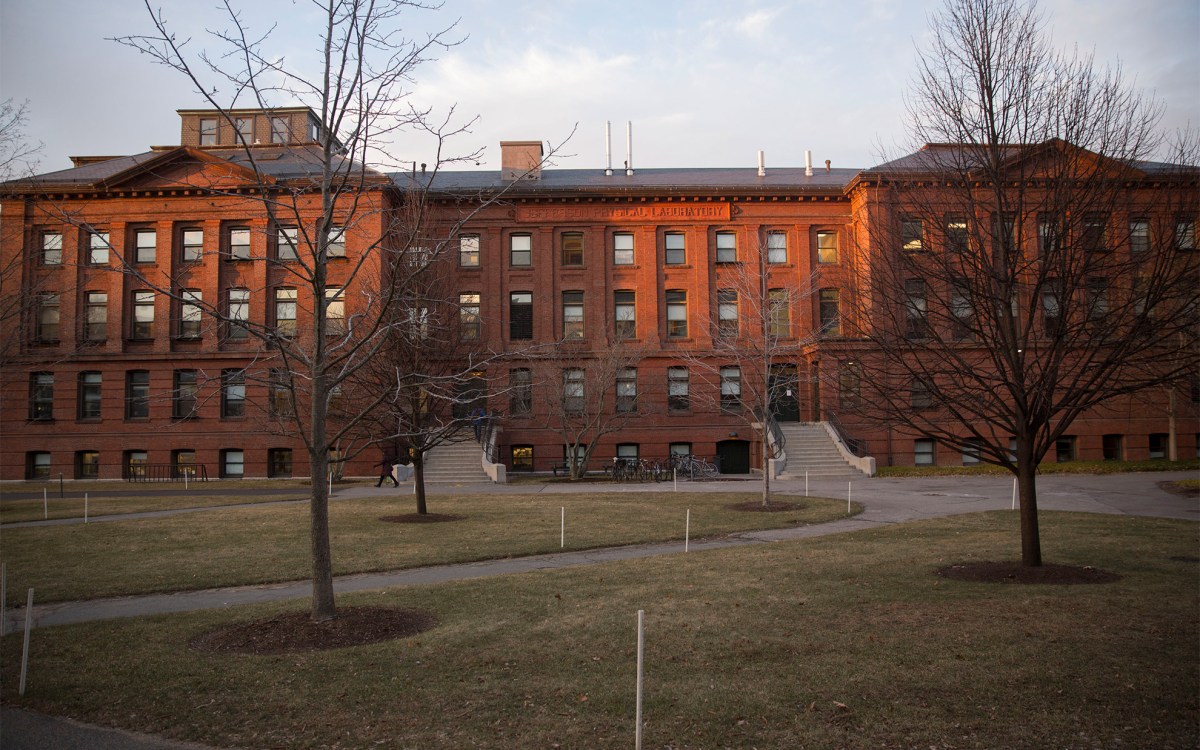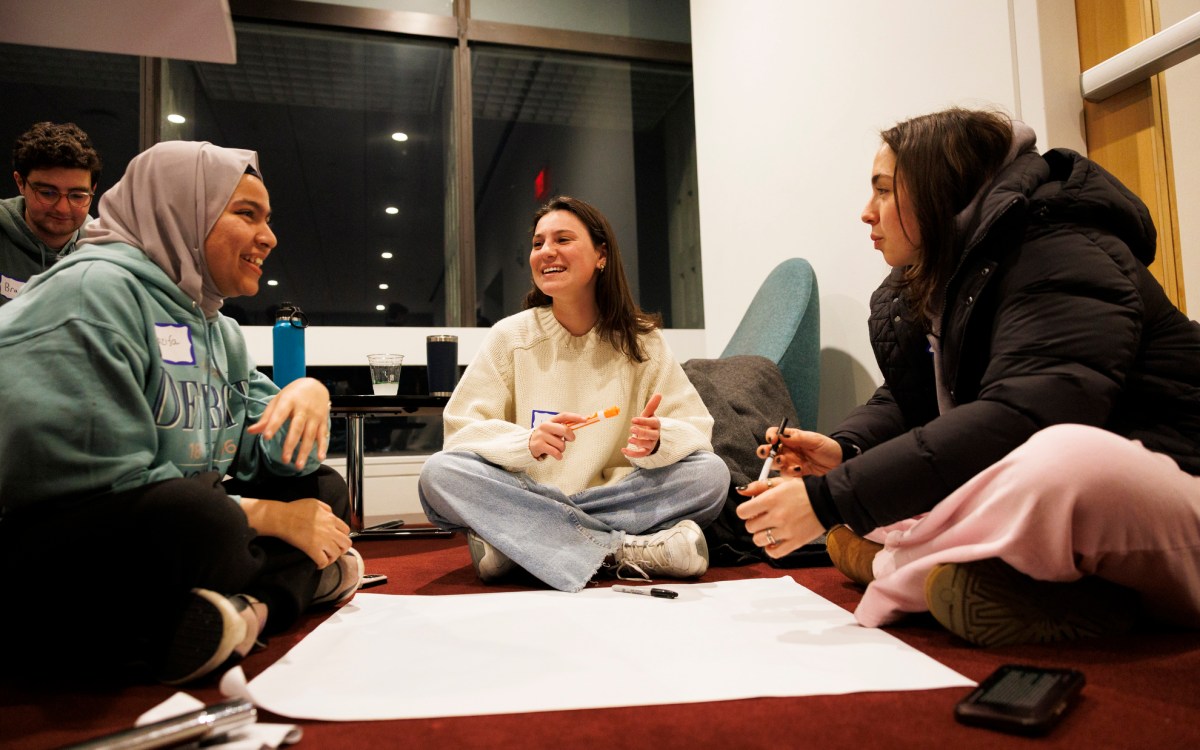Hidden Spaces: Newell Boathouse
A timeless home to the men who row
Hidden Spaces is part of a series about lesser-known spaces at Harvard.
Framed black-and-white photographs, spanning well over a century, encircle the second-floor walls of Harvard’s Newell Boathouse. They are mostly group shots of each varsity rowing team, right up to the present. But the space for 1917 contains a photo of rowers on the Charles River, instead of the standard staged group picture. The caption reads: “Varsity Crew 1917. Rowing stopped on account of war.”
In the earliest photos, men wear muttonchop whiskers, handlebar mustaches, and center parts in their hair. One team is wearing suits instead of uniforms, and the 1912 men are bare-chested. Turtlenecked uniforms, leggings, and laced shoes have all evolved in the intervening years. But today’s do-rag caps appear to have debuted in the 1870s. The one constant in the photos is that the coxswain sits on the floor in front of the rest of the team, often cross-legged.
Almost as omnipresent is Olympian and men’s varsity coach Harry Parker, who is the most-photographed face on the walls of Newell. Beginning in 1963 — when he looks little older than the students beside him — up to the present day, we see nearly 50 smiling Harrys.
Memorabilia not displayed on the walls are stored in closets filled to the brim, and displays of memorabilia are changed periodically. Juxtaposed against the old paraphernalia are several new rowing machines. The state-of-the-art orange Oartec sliders look out of place, as does the computer in the workshop that boatman Joe Shea uses to check the weather regularly.
Possibly nowhere on Harvard’s campus is as untouched and nostalgic as Newell. The boathouse is not open for recreational use, only to Harvard’s male oarsmen, which is perhaps why so much of the place is intact after 111 years. Besides the hundreds of framed photographs, there are duct-taped scrapbooks overflowing from the shelves, piles of ancient wooden oars, and silver winners’ cups randomly strewn about. An enormous black-and-white photo of the “Rude and Smooth,” the undefeated crew team of 1974, dominates the landing of the tired stairwell.
On the first floor of Newell are two water-filled tanks with boats inside. Both were once motorized with moving water. These days only the newer 1973 tank continues to move water. Mirrors line the walls of these rooms so rowers can check their form during practice.
In the 1892 and ’93 photographs, boathouse namesake Marshall Newell ’94 is one of the elite oarsmen. Newell was a football and crew star at Harvard. He was tragically killed while working for the railroad when a train hit him on Christmas Eve in 1897. Described as ????beloved by all those who knew him,” the 5-foot-10-inch, 170-pound Newell was an All-American football player each of his four years at Harvard and played every minute of every game from 1890 to 1893. He was described by the College Hall of Fame as “a deeply sensitive man, a compassionate fellow of heart and understanding in complete contrast to the ferocity with which he played the game of football.” Known to counsel younger athletes, his nickname was “Ma.” As a tribute to his greatness, Harvard alumni raised $2,000 to build the boathouse in 1900.
Bridging the centuries, Newell’s men impart a sense of ageless camaraderie, a perception of a torch passed. The longevity of Parker, the legacy of Newell, and the bar created by the Rude and Smooth team are just part of the history that is Newell. In between on the boathouse walls are thousands of lesser-known men’s faces, the elite oarsmen who have come and gone, striving, as this season’s rowers will do, to be the best.
Since 1965, rowers have come from far and near to the banks of the Charles River to take part in the world’s largest regatta. Racing at Head of the Charles is a challenge to experienced and novice competitors alike. Every year crews and scullers race along the many bends of the 3-mile course, navigating through buoys, boats, and bridges. At the Head of the Charles, a poorly made turn or single buoy violation can cost a first place medal. This year’s Head of the Charles regatta will be held Oct. 22-23.
— Rose Lincoln




